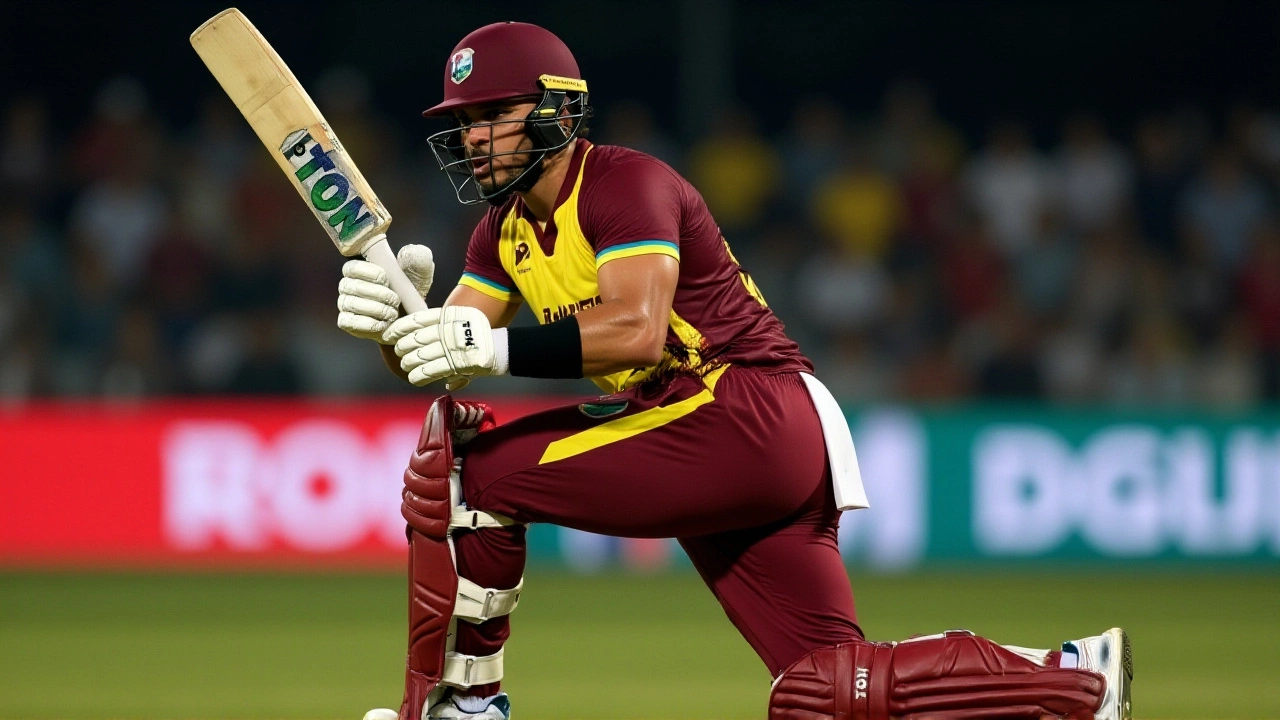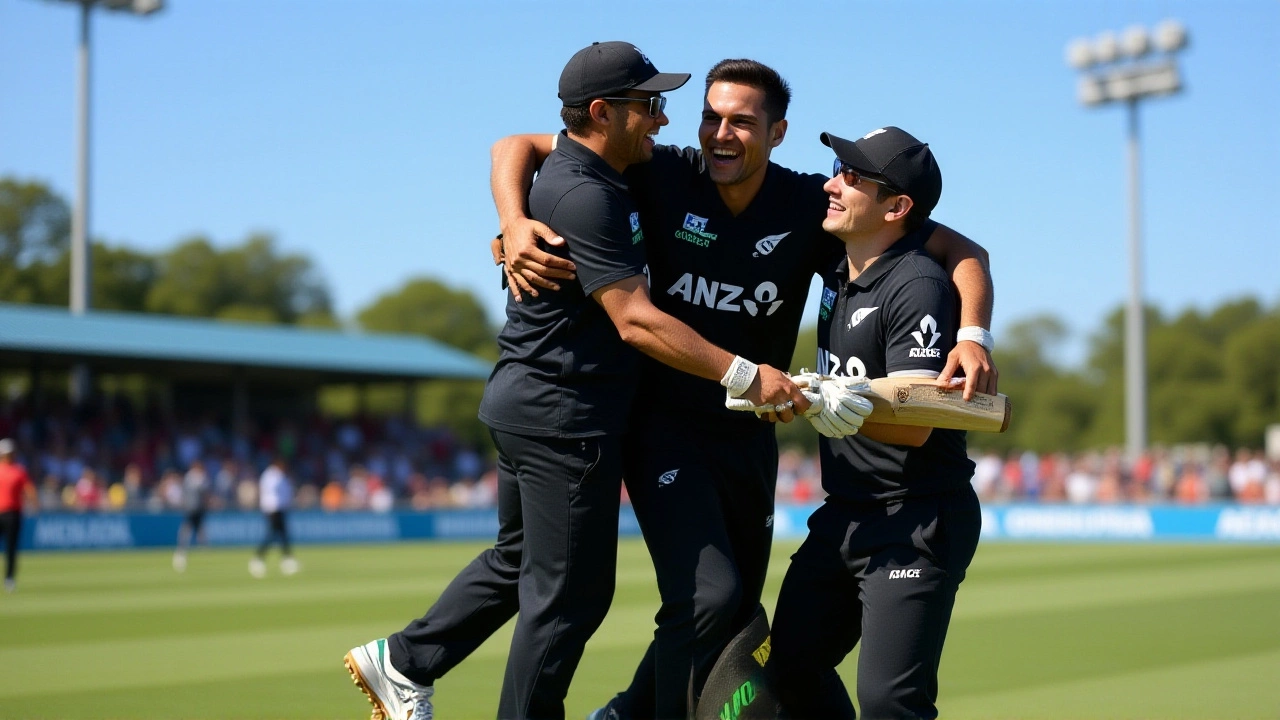West Indies completed a commanding 2-0 series sweep over Bangladesh on Thursday, October 29, 2025, with a 14-run win in the second T20I at the Bayasgandha Sports Stadium in Chattogram. Chasing 150 to stay alive in the series, Bangladesh collapsed under pressure, bowled out for 135 in 19.3 overs — a performance that echoed their earlier defeat in the opening match. The win wasn’t just about the scoreboard; it was a statement. For the West Indies, it marked their first bilateral T20I series triumph in over five years — a drought that had become a talking point in Caribbean cricket circles. The West Indies tour of Bangladesh, 2025Bangladesh ended not with a whimper, but with a roar — and a long-overdue confidence boost for a team that’s spent too long searching for consistency.
Batting backbone: Athanaze and Hope carry West Indies
West Indies, after winning the toss and choosing to bat, didn’t start strongly. They lost two early wickets, and at 45 for 3 in the sixth over, the innings looked shaky. But then came Alick Athanaze and Shai Hope. The pair stitched together a 78-run partnership — the highest of the innings — with Athanaze smashing 52 off 38 balls and Hope anchoring with 54 off 47. Their calm under pressure turned what could’ve been a below-par total into a competitive one. The rest of the lineup offered little: only one other batter reached double figures. But it didn’t matter. With the pitch offering turn and variable bounce, 149 was enough — especially when paired with the bowling firepower that followed.Enter Keon Seales and Akeal Hosein. Seales, a 22-year-old fast bowler with a knack for late swing, returned figures of 3 for 24 in his four overs, including a crucial spell in the death overs that stifled Bangladesh’s momentum. Hosein, the left-arm spinner, was the quiet assassin. He bowled the first four overs of the innings — the powerplay — and conceded just 18 runs while taking two wickets. That early damage set the tone. By the time Bangladesh’s middle order arrived, they were already chasing shadows.
Bangladesh’s fight — and fatal flaws
Tanzid Hassan Tamim gave Bangladesh hope. Opening the innings, he played like a man possessed — hitting boundaries in all directions, even pulling fast bowlers over midwicket. His 61 off 48 balls was the only bright spot in a dismal batting effort. He had support for just one over before the next wicket fell. The rest? A parade of half-hearted shots, poor footwork, and unforced errors. Partnerships rarely exceeded 30 runs. Even when Tamim was gone, the innings never regained rhythm.That’s where Mustafizur Rahman came in. The veteran left-arm pacer, still one of the most lethal death bowlers in T20 cricket, delivered a masterclass. His 3 for 21 included a spell in the 15th over that had the crowd on its feet. He conceded just five runs and took two wickets — a moment the T Sports broadcast crew replayed three times. "What an over. What an over from Mustafizur Rahman," the commentator gasped. But even his brilliance couldn’t mask the bigger issue: Bangladesh’s middle order simply doesn’t have the depth to compete with top-tier teams in high-pressure games.
Rishad Hossain (2 for 20) and Nasum Ahmed (2 for 35) pitched in, but the damage was done. The spinners, who had dominated in Dhaka’s cracked pitches during the first match, found little purchase here. The pitch was firmer, the bounce truer — and West Indies’ batsmen adapted better. Bangladesh’s captain, Tamim Iqbal, had earlier said he "threw it away" in the first match. In this one, he watched his team do the same — again.
The broader significance: A long-awaited win
This series win wasn’t just about two matches. It was about legacy. The West Indies haven’t won a bilateral T20I series since 2019 — a five-year gap filled with inconsistent performances, leadership changes, and a lack of clear direction. The commentary team repeatedly referenced this drought, calling it "some time" — a euphemism for a painful, public struggle. Now, with this 2-0 sweep, they’ve reasserted themselves. For a team that once ruled world cricket, it’s a small step. But in the modern T20 landscape, where every win counts, it’s a meaningful one.For Bangladesh, the loss underscores a deeper problem. Their spinners are world-class, but their top-order consistency remains erratic. They’ve lost six of their last eight T20I series. Their home advantage, once a fortress, now feels fragile. And with the third match — scheduled for Friday, October 30, 2025, at 12:00 PM local time — already decided, the focus shifts to rebuilding. The Dutch Bangla Bank, title sponsor of the series, may be happy with the exposure. But for fans, the question lingers: when will Bangladesh stop losing to teams they’re expected to beat?

What’s next?
The third and final T20I will still be played, but it’s purely ceremonial. West Indies will use it to experiment — likely giving younger players like Seales and debutant all-rounder Odean Smith a full run. Bangladesh, meanwhile, will be watching their spinners closely. Mustafizur, now 29, can’t carry this team forever. Who’s next? And can someone like Tanzid Tamim evolve from a flash-in-the-pan performer into a match-winner?For now, West Indies celebrate. They’ve won a series. They’ve silenced critics. And for the first time in years, they’re playing with belief. The next challenge? Turning this into a consistent pattern — not just a one-off.
Frequently Asked Questions
Why is this West Indies series win considered significant?
This marks West Indies’ first bilateral T20I series victory since 2019 — a five-year drought that highlighted their inconsistency in the format. After years of rotating captains and struggling to find a balanced lineup, this 2-0 sweep against a home side with strong spinners signals a potential turning point in their rebuilding phase.
How did Mustafizur Rahman’s performance compare to his past T20I outings?
Mustafizur’s 3 for 21 was his best T20I bowling figures since the 2022 Asia Cup. His 15th over — five runs, two wickets — was his most impactful since 2021. While he remains Bangladesh’s most reliable bowler, his teammates’ inability to back him up has been a recurring issue in recent series.
What role did the pitch at Bayasgandha Sports Stadium play?
Unlike Dhaka’s slow, cracked surface from the first match, Chattogram’s pitch offered more pace and bounce. This favored West Indies’ fast bowlers and punished Bangladesh’s aggressive, front-foot hitters. The difference in conditions exposed Bangladesh’s lack of adaptability — a key weakness in modern T20 cricket.
Who were the standout performers for West Indies beyond Athanaze and Hope?
Keon Seales (3/24) was instrumental with the ball, especially in the death overs, while Akeal Hosein’s powerplay spell (4-0-18-2) stifled Bangladesh’s start. Both are emerging talents who showed they can handle pressure — a rarity for West Indies in recent years. Their contributions were as vital as the half-centuries.
Why did Bangladesh’s middle order collapse so badly?
Bangladesh’s middle order has struggled for cohesion since 2023. Players like Mushfiqur Rahim and Shakib Al Hasan are aging, and the next generation — like Najmul Hossain Shanto — haven’t yet delivered consistently under pressure. Against disciplined bowling, they tend to panic, leading to rash shots and quick dismissals.
Is there a chance West Indies can maintain this momentum?
Possibly. Their core — Hope, Athanaze, Hosein, and Seales — is young and motivated. If they can replicate this performance against South Africa and Australia in early 2026, this could be the start of a resurgence. But consistency remains their biggest hurdle. One series win doesn’t fix years of instability.





